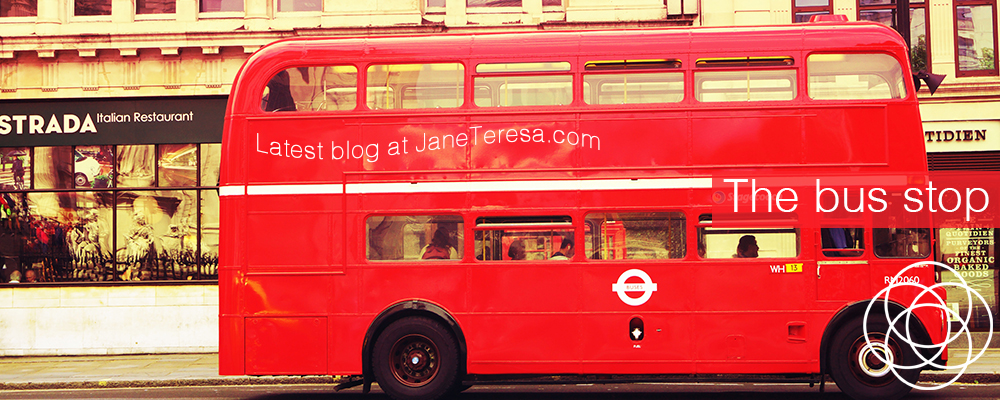Once upon a dream, everything changed.
I’d had a recurring dream theme for many years. The dream stories were always different, but, at some point, I would need to catch a bus. I was always in a faintly familiar city, but a little lost. The streets had changed, or the bus stops had moved, or when I caught a bus at a familiar stop it took me in a different direction to my intended destination and I’d have to try to stop the bus so that I could get off and retrace my journey.
Working with these dreams, I knew they reflected times of transition when I had one foot in familiar territory and the other stepping into uncertainty, an intended destination in mind, but missing complete clarity on how to get there.
When you have a goal in mind, or an intention to fulfil, do you plan every step before you make a move, or do you take the first steps confident that you’ll work it out as you go? Do you step out with a fixed goal, knowing you’ll watch the signs and feel your way to that particular destination, or do you step out with a general direction or intention in mind but open to letting the challenges and mysteries you encounter reveal a better opportunity? Or are you too wary to step beyond the familiar at all?
When I was in my early teens, my optician advised my parents that my eyesight might improve if I stopped wearing my glasses all the time, and reserved using them for schoolwork, writing, reading, and watching television. Research, he said, suggested that leaving my glasses off would train my eyes to see better. I struggled for a couple of years with this approach. It didn’t work. One of my biggest challenges was getting on the right bus to go to school. Even after all these years, I can still remember the bus numbers: 148, 148b, and 143. I can no longer recall which of these was the right bus, and which were the ones that would start off in the right direction but then turn left and head off into the wrong suburb, a long way short of my school. I was ok if other kids from my school were at the bus stop. If they got on, it was right bus for me. But when I was there alone, I was anxious. Squinting didn’t help.
I have no idea, as an adult looking back, why I didn’t check with the driver when I boarded.
I must have been shy, or worried about asking a silly question. Perhaps I should have grabbed my glasses from my satchel and popped them on as the busses approached, so I could read their numbers. I must have been dedicated to training my eyesight. As an adult I can be very self-disciplined and self-motivated when I have a goal in mind. Maybe I had that trait then. Looking back, I suspect that I did.
Although I can be very disciplined, my personal style is to step out with a goal in mind rather than an unbreachable plan. I watch the breeze, listen to the wind, and sniff out the options. I get in touch with the current wisdom and get a taste for different approaches. I employ all my senses and watch for feedback and perspectives in my dreams. I discipline myself to following an unfolding and revealing path, and making choices along the way, rather than disciplining myself to a specific non-negotiable plan.
My bus dreams helped me to recognise the various stages of these journeys, and to alert me to my blocks and limiting beliefs, as well as to my options.
In exploring these dreams, I was always focussed on the buses, and the bus routes, as if there were a set number of routes by which I could reach my goal, and my task was to choose the best one and find out how to get started on it. My challenge, in many of these dreams, was not the destination (I always knew where I wanted to go) but having clarity on the route, just as my challenge, as a young teenager, was not the destination (I needed to get to school) but having the clarity of eyesight to get on the right bus. My dreams, it seems, chose an excellent personal symbol. I learned that I was confident of my goals, but that my clarity on how to achieve them was not so good. I learned to embrace the positives of this and allow uncertainty – and faith – to be my guide. What if the ‘wrong’ bus were actually the ‘right’ bus, and the lessons learned along the way the quickest route to the destination?
So imagine my surprise, when this dream theme came to an abrupt conclusion once upon a dream.
That night I dreamed I was walking fast, trying to get to the bus stop in time to catch the bus, when a taxicab drew up alongside me. “Where do you want to go?” asked the driver, “I can take you straight there.” I hesitated, mentally absorbing in the offer. “It’s my job to serve you,” the driver persuaded, “I need you to let me work for you.”
In all these dreams it had never occurred to me to take a taxicab. It had certainly never occurred to me that I had a personal driver and that I had been depriving him of work and purpose.
In waking life, I rarely take buses. I walk, drive, or catch a cab. The buses in my dreams were purely personal dream symbols, related to the way I approached my goals back then.
It was the taxicab version of the dream that alerted me to the fact that buses travel set routes. Taxicabs don’t. I had been exploring set routes, established ways of reaching goals, the kinds of routes lots of people take, just as buses are designed to take lots of people to a destination following a set route. This dream freed me to see other ways of achieving my goals, beyond the conventional, or beyond the set routes that existed in my mind. While I could celebrate the goals I had achieved and the things I had learned about more conventional approaches, I was now ready to tune into my own inner driver, one charged with a mission of service and purpose.
While my dream solution evolved naturally, and probably came at a time when I had learned what I needed to learn from travelling conventional routes and believing in a fixed number of set approaches, I might have accelerated my learning if I had applied tools, back then, that I use now.
Instead of totally focussing on the bus dream symbol, I might have asked myself if there was another way to get to the dream destination. Awake, and exploring, I might have come up with several ideas: walking, hitching a lift, taking a train, calling a cab. The idea of a cab might have appealed to me and I might then have noticed the freedoms it offered. Applying this metaphor to my waking life situation might have shifted my perspective many moons before the taxicab made its appearance in a dream.
Question your dream symbols. It’s an art and a science that can take you to wonderous places. The taxicab door is open: go!
You might also enjoy

